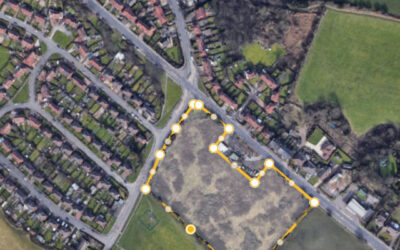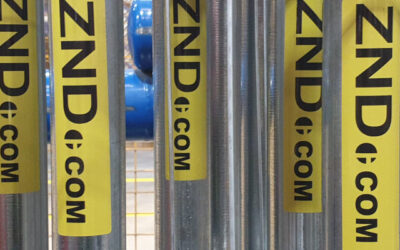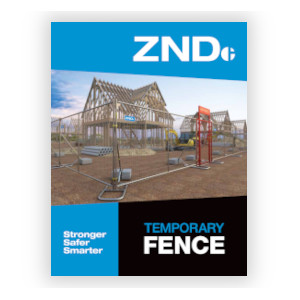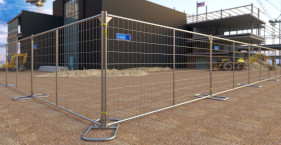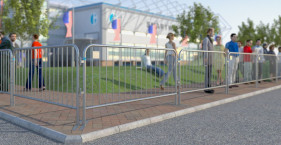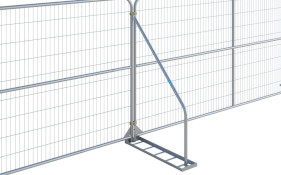If you’ve ever been to a concert or stood in a long line, you know that properly setting up pedestrian barriers & event barricades is the difference between order and chaos—between a fun event with a slightly-too-long wait, and a disaster people remember because of the video on X of someone getting trampled.
When set up correctly, pedestrian barriers and event barricades help event planners, business owners, and government officials keep people and property safe. Whether it’s a festival, sales event, sports game, or parade, barricades are a must-have when crowd control is a priority.
Safety barricades may look simple to use, but it’s not as easy as it looks. Proper planning and setup will help you ensure that the barriers you rented do their job.
Here’s how to set up pedestrian barricades correctly.
Think about fence transportation
Steel barricades are heavy, and moving them from storage to the event location is probably going to take more time and energy than you think.
Whatever you do, you don’t want to do it by hand only. Barricade stillages are special frames that hold around 30 barricades each. They can be lifted and moved with a forklift.
However you intend to move them, plan ahead for fence transportation and make sure you have enough time and people to do it.
Plan the layout of your pedestrian barricade
Different situations call for different arrangements of barricades, so think about your layout ahead of time. You don’t want to be trying to decide on the best configuration at setup time.
The first question to ask is what kind of event these are for. Are you building a queue for a concert or trying to keep people off the street for a parade?
If it’s for a line, you should have a clear entrance, an expandable U-shaped queue, and a clear exit or checkout point. You want people to clearly see how close they are to the end of the line.
If you’re building a street barricade, the two key components are holding areas that keeps people safely out of the event space and then exit points facing away from the event to give people the option to leave as needed.
To avoid bottlenecks, make sure to set up your barricades so that lines don’t begin at entrance or exit points.
Finally, make sure that queues are wide enough for people to crowd together and spread apart. As a line gets longer, people in the back of the line tend to start pressing forward. Having enough breathing room makes it less likely an accident will happen during a crowd surge.
Leave space for gates and exits
Once you’ve arranged a line of barricades, it’s difficult to take apart. Removing one barricade from a line will disrupt the integrity of the whole queue.
Plan ahead and decide where to leave strategic breaks or put gates in the queue. In case of an emergency—bathroom, medical, or otherwise—you want guests to be able to leave quickly and event staff, security professionals, or first responders to be able to access any point of the queue relatively easily.
Set it up early
Set up your barriers at least one day ahead of time.
Why? Once the event starts, it’s too late. No matter how nicely you ask, a festival crowd won’t let you set up barricades after the show starts. Not only that, but some guests always show up early. If it’s for a sales event, for example, you might have people lining up the night before.
You don’t want people starting their own line before you’ve created yours. Arriving guests should see a barricade queue already set up. It reduces confusion and signals that the line is going to move in a standardized, orderly fashion.
Monitor your barricades
Even once you’ve set up your barricades, your work isn’t over.
Pedestrian barricades and the people in them shouldn’t be left to themselves. The combination of excitement, impatience, boredom, and movement with so many people in a confined space can lead to disruptions. People may try to cut the line, need to find a bathroom, or want to ask a question.
Especially for long lines, it’s helpful to have a designated employee or two to monitor the line, remind customers at regular intervals how long it is before they’ll reach the end, and answer any questions people may have.
Keeping an eye on the event barricade you put so much thought into ensures it does it’s job for the whole event.
About ZND pedestrian barriers & event barricades
ZND manufactures state-of-the-art pedestrian barriers that are built to be exceptionally stable, easy to use, and avoid some of the most common problems with other temporary fence products.
All of our barriers are made with our SmartWeld technology. It’s a process that uses electricity to melt steel together, resulting in joints that are 70% stronger than a typical MIG weld.
Unlike many pedestrian barriers that require you to awkwardly interlock legs to form corners, ZND barriers come with a hook and loop system that makes setup easy without compromising stability.
Replaceable, non-scratch plastic feet both protect surfaces and provide grip.
Finally, each barrier comes with a special steel plate that allows for customized branding with your company’s name and logo. We can do the branding for you so your barricades arrive ready to use immediately.


